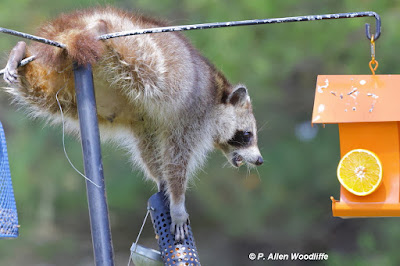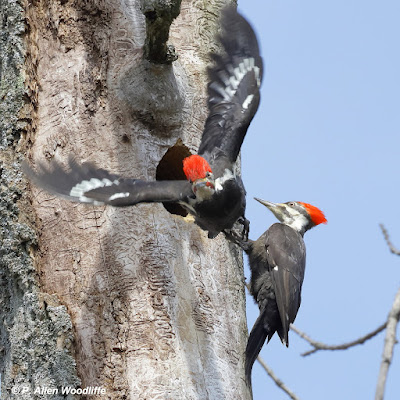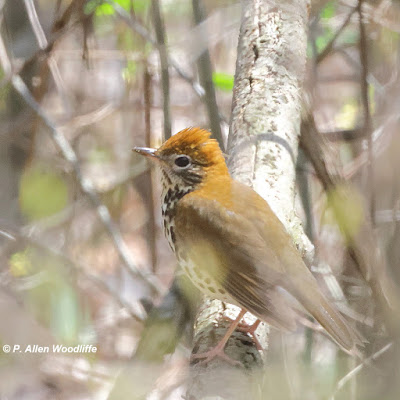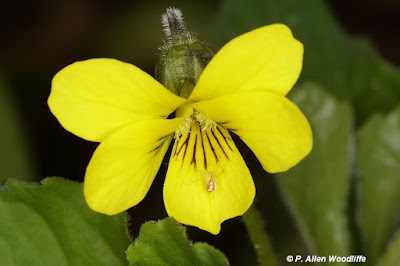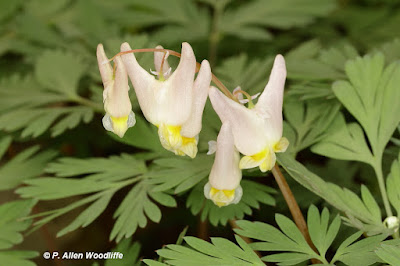First of all, a Life on a Sandspit update: it is currently available from the Friends of Rondeau bookstore at the Visitor Centre. The selling price is $27. Part of that, of course, goes to support the Friends. I am working on having the books also available at other local outlets in southern Chatham-Kent. There may be an option to make them available by mail, so stay tuned.
So many cooperative birds to photograph! I likely will have another wildflower post in the near future, as they continue to appear on the landscape, but this is prime birding season, so it is back to birds for this one.
I've spent a bit of time at St. Clair NWA, as it is fairly close to home. One of the highlights of my most recent visit was seeing about 7 Palm Warblers right along the trail. They aren't always the easiest bird to photograph so I was pleased with this opportunity. Most of the time they were on the ground, but on occasion they would get up and grab on to a plant stem.
Chipping Sparrows were here and there.
A few goslings were out exploring their wetland with their parents.
There is often an American Coot or two seen....
....and always a few Red-winged Blackbirds which pose for a short time.
I have heard Soras there from time to time, but they seldom show themselves. I'm hoping that Virginia and King Rails might be heard on a future visit, and also see or at least hear American and Least Bitterns. They are undoubtedly there now, but aren't easy to see.
A little farther up the edge of Lake St. Clair, there are good spots to see terns. This pair of Forster's Terns were getting right into the mating season.
There were lots of Painted Turtles, as usual, but I only shot this Northern Map Turtle, a species at risk.
I stopped at the Blenheim lagoons briefly on one occasion, in between showers. Lots of Ruddy Ducks were there although most were well out from the edge......
....and due to the cold weather, there were hundreds of swallows, mostly of the Tree Swallow type, but a few Barn Swallows, one of which is shown next. They are always a challenge to photograph as they swoop erratically in their chase for an insect to devour.A short visit to the Erieau Rail Trail turned up a few warblers and others things. I did not get to see the Yellow-throated Warbler that showed up for a day, but I did see some dowitchers. The only one I got a photo of was a Short-billed. The other one that was a little farther away might have been a Long-billed. Both have been reported over the last few days.
Tree Swallows are always around, and occasionally take a rest on a branch.
Rondeau is where I have spent a little more of my birding time. There is always something to see, even if sometimes there is lots of distance between birds, and even more distance between birds to photograph. Black-capped Chickadees were quite abundant not that long ago, but most seem to have moved on....
Downy Woodpeckers are less vocal via tapping than a week or two ago, so they must be into nesting mode.
While an occasional Brown Thrasher had been seen not that long ago, it seems to be more abundant lately.
I managed a shot or two of a Blue-gray Gnatcatcher as it flitted continuously and erratically at ground level searching for bugs in the rain.
Eastern Phoebes are scattered around on established territories.
Eastern Towhees are more often heard than seen, but this one cooperated for a few minutes in a tree by the trail.
House Wrens are fairly common, singing loudly and frequently.
Killdeer are in nesting mode, and sometimes faking it.
Northern Flickers are common, but are skittish when a birder is around. I guess they feel safer high up in a tree.
A Northern Waterthrush entertained a few birders near the Log Pond on one occasion.
The feeders at the Visitor Centre always attract birds and birders....and sometimes even in broad daylight this normally nocturnal critter just couldn't resist.
Along the trail, there are still some Hermit Thrush, although they are dwindling in number....
A recent highlight was to see this Red-headed Woodpecker at a distance, but at eye level.
Another highlight was while I was exploring a little used trail. I noted a Pileated Woodpecker fly in nearby. It seemed a bit more silent than usual and I watched it fly to a dead tree that was full of holes. It gradually moved up and poked its head into one that looked fresh, and then backed out. Almost immediately the male dove out, and headed straight towards me before veering off! I don't think it was intentional.
I plan to keep an eye on this nesting pair, as the several pair that call Rondeau home are not often nesting in somewhat of an accessible location. Fingers crossed!
This Solitary Sandpiper was busily hunting for food in the vicinity of the Log Pond.
As I was walking down Harrison Trail, I heard an unfamiliar chirp. I eventually tracked it down to this Wood Thrush. Every year one has to re-familiarize oneself with bird calls, songs, etc.
Yellow Warblers will soon be by far the most numerous warbler encountered at Rondeau and area.They are always fun to see.
Not that long ago a Black Vulture was seen at a couple of places just outside of Rondeau. I wasn't there that day, but I have seen that species on several occasions over the years. But I have paid a bit closer attention to vultures I have seen, including this pair of Turkey Vultures perched on this tree trunk just outside the park, which lent themselves nicely for a photo op.
If you would like to subscribe, or unsubscribe, to Nature Nuggets, send an email to: prairietramper@gmail.com





























